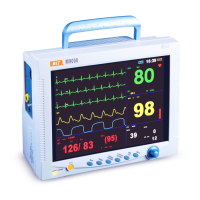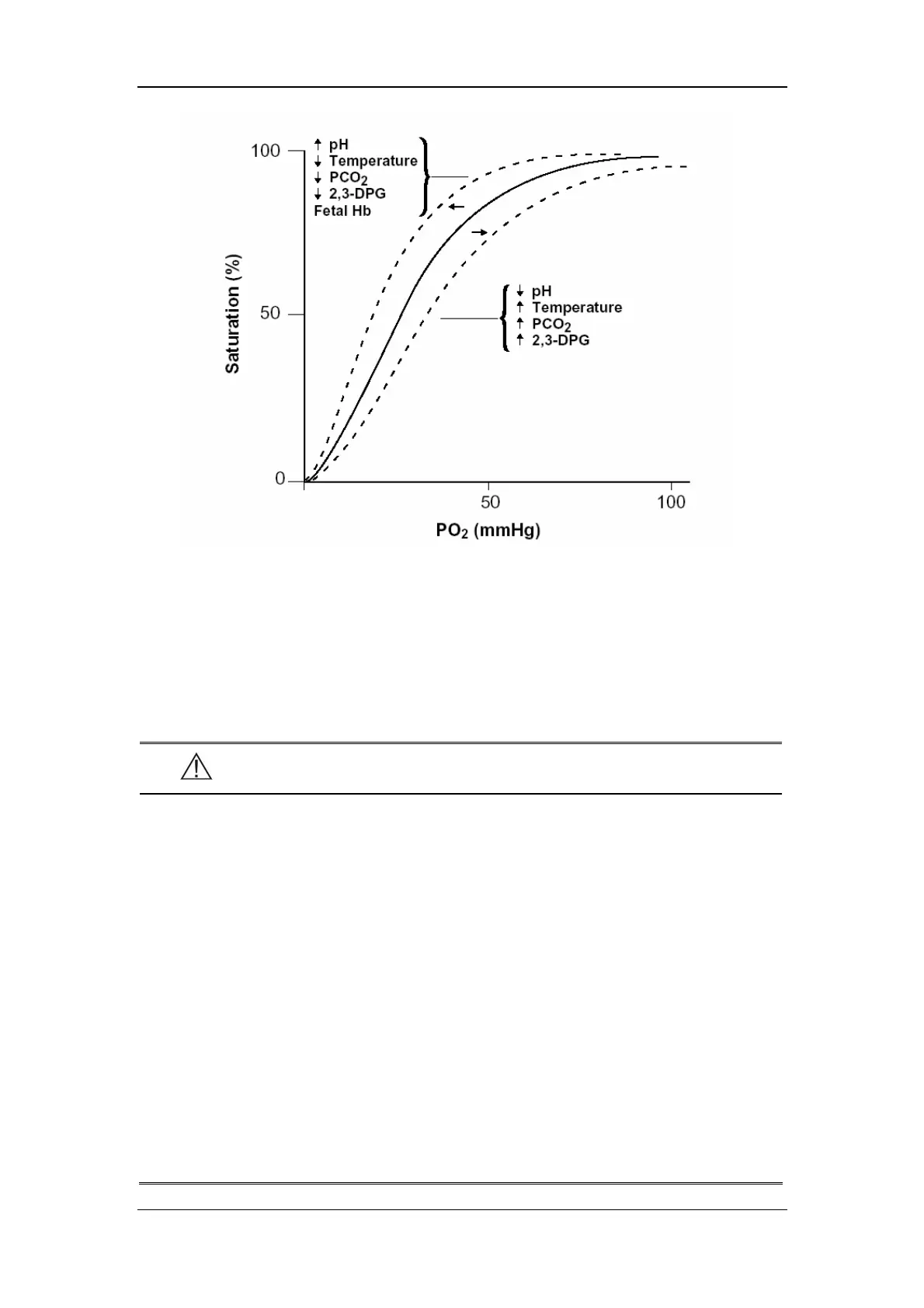SpO
2
Monitoring
12-25
Figure 12-8
Oxyhemoglobin Dissociation Curve
12.4.2 Precautions
WARNING
z Pulse oximeter can overestimate the SpO
2
value in the presence of
Hb-CO, Met-Hb or dye dilution chemicals.
z ES (Electrosurgery) equipment wire and SpO
2
cable must not be tangled
up. Carefully route patient cabling to reduce the possibility of patient
entanglement or strangulation.
z Do not use this instrument and the sensors during magnetic resonance
imaging (MRI). Induced current could potentially cause burns. The
monitor may affect the MRI image, and the MRI unit may affect the
accuracy of the oximetry measurements.
z Do not put the SpO
2
sensor on the limb with arterial catheter or venous
syringe.
z Do not use the supplied sterile SpO
2
sensors if the packaging or the
sensor is damaged. Return them to the distributor or manufacturer.

